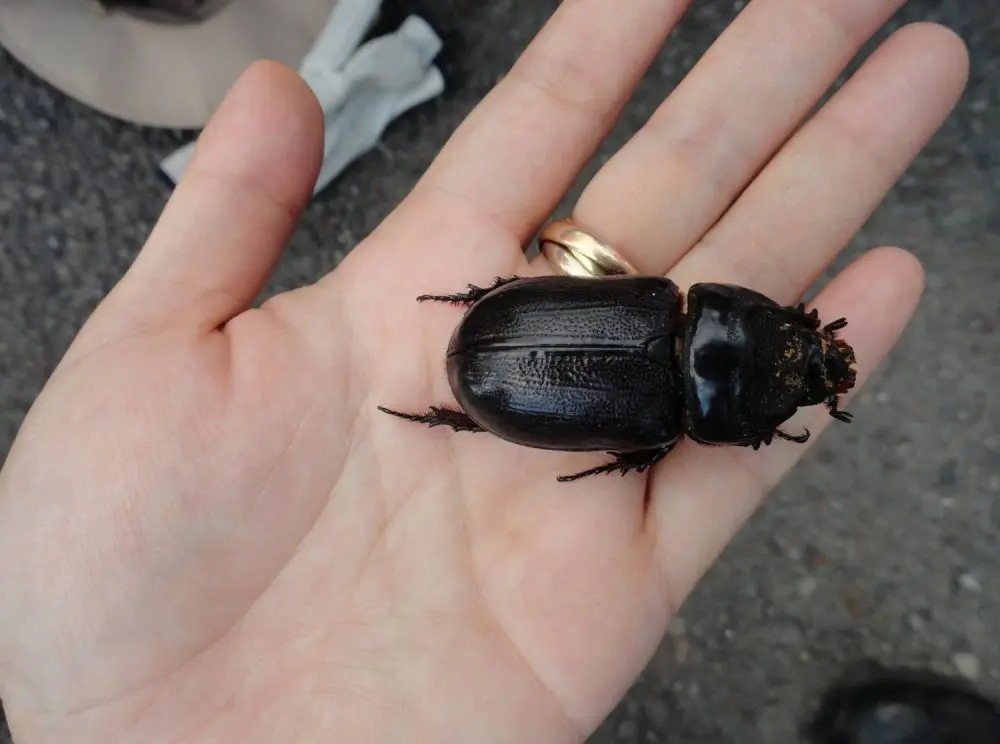Since May, there have been two reports of coconut rhinoceros beetles (CRB) detected on Lāna‘i in plants transported from O‘ahu.
Pūlama Lāna‘i (PL), a land management company with a landscape and biosecurity program that services the island, found CRB in recent shipments of potted plants from O‘ahu.
According to PL reports, on May 30, its staff detected a possible CRB larva in a large pot containing a palm plant that arrived from O‘ahu two days before, which was under a mandatory quarantine. As a precaution, PL immediately quarantined the entire shipment in two 40-foot shipping containers. PL notified DAB’s Plant Quarantine Branch (PQB) on June 5. PQB agriculture inspectors from O‘ahu and Maui confirmed the larva as CRB on June 6. PL chose to destroy the entire shipment by deep burial rather than return the shipment to O‘ahu.
On June 19, PQB sent an entomologist and a microorganism specialist from O‘ahu and a master journeyman inspector and an additional inspector from Maui to Lāna‘i to un-pot and inspect every plant in the shipment. During the inspection, one live CRB larva was found at the bottom of 45-gallon pot containing a large palm tree. Inspectors believe that new compost material was added to the pots just prior to shipping and that the new compost material may have been the source of the CRB larvae. No other CRB were found in the shipment and the inspectors witnessed the burial of the plants beneath at least seven-feet of dirt. The day after the burial, the two Maui inspectors remained on Lāna‘i to conduct outreach and education about CRB and other pests with other island businesses and the U.S. Postal Service. PQB worked with the nurseries where the plants originated. They did not have apparent CRB infestations.
On July 9, PL was offloading a shipment of assorted plants from O‘ahu and detected a species of ant (not little fire ant) and the shipment was treated with insecticide for the ants the next day. While offloading the shipment on July 11, staff found an adult male CRB on top of a 45-gallon pot containing a tropical plant. The plants in that shipment were sealed in a 40-foot shipping container and were destroyed by burning on July 11.
Due to the recent interceptions of live CRB in large potted plants from O‘ahu, DAB, PL and other partner organizations are working on multiple fronts to prevent any additional incidents. PQB will deploy more CRB detection traps with pheromone lures on Lāna‘i in addition to the ones from PL and the U.S. Department of Agriculture.
PQB is also exploring a voluntary agreement with PL to stop the purchase of potted plants larger than 10 gallons from O‘ahu to minimize the risk of introducing CRB to Lāna‘i. CRB Response may also conduct research on possible fumigation methods for shipments of potted plants to kill CRB and its larvae and eggs.
On the legal front, PQB continues to work on amending administrative rules to address issues on the movement of CRB host material from infested areas.
Photo credit: Hawaiʻi Department of Agriculture





